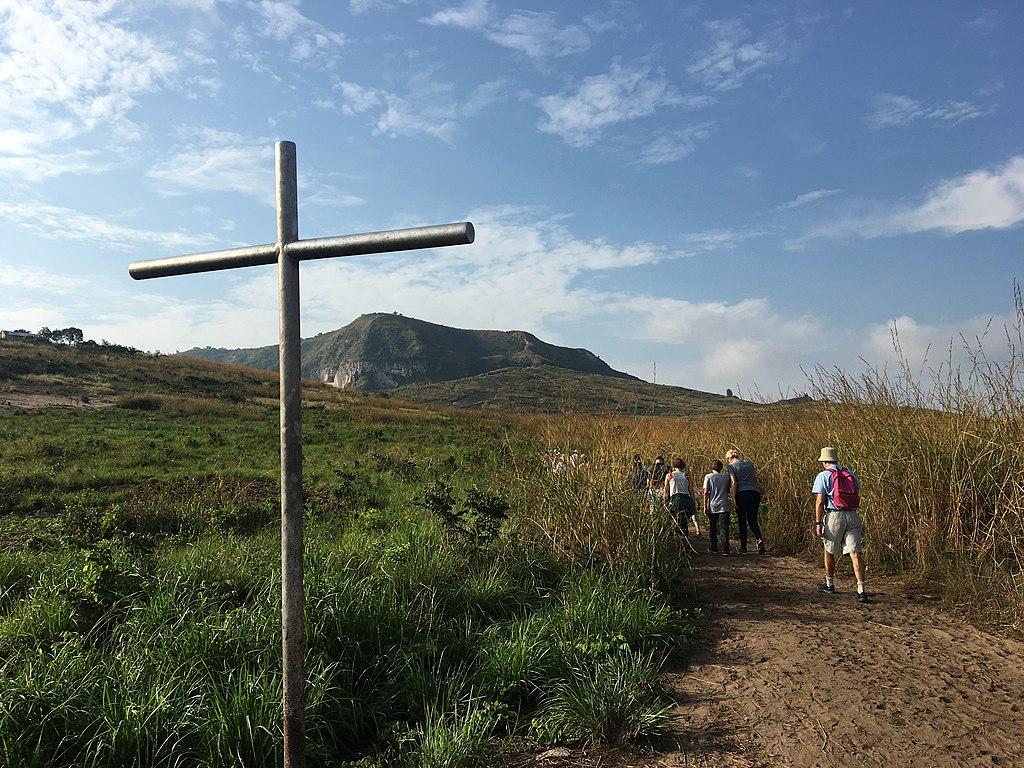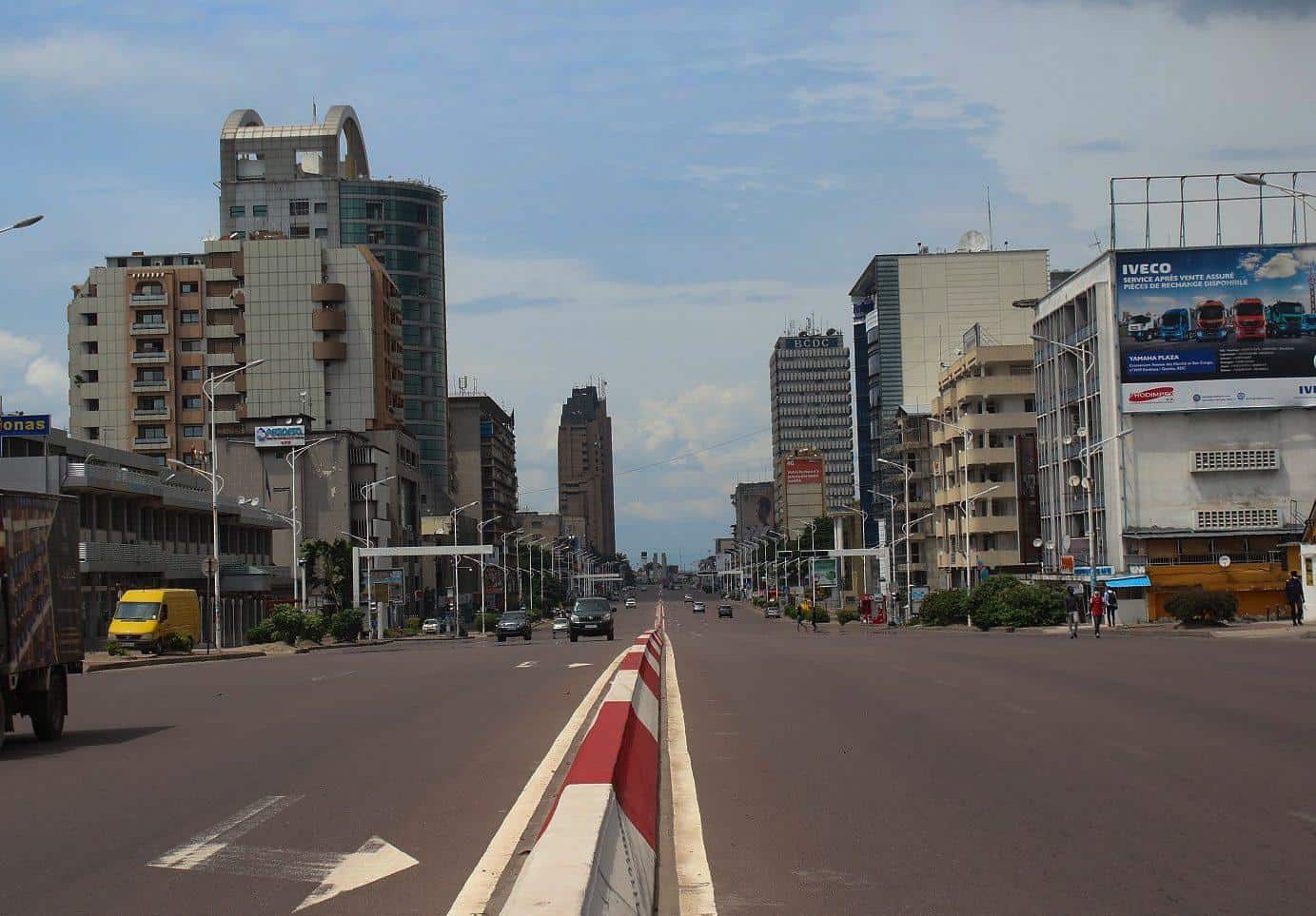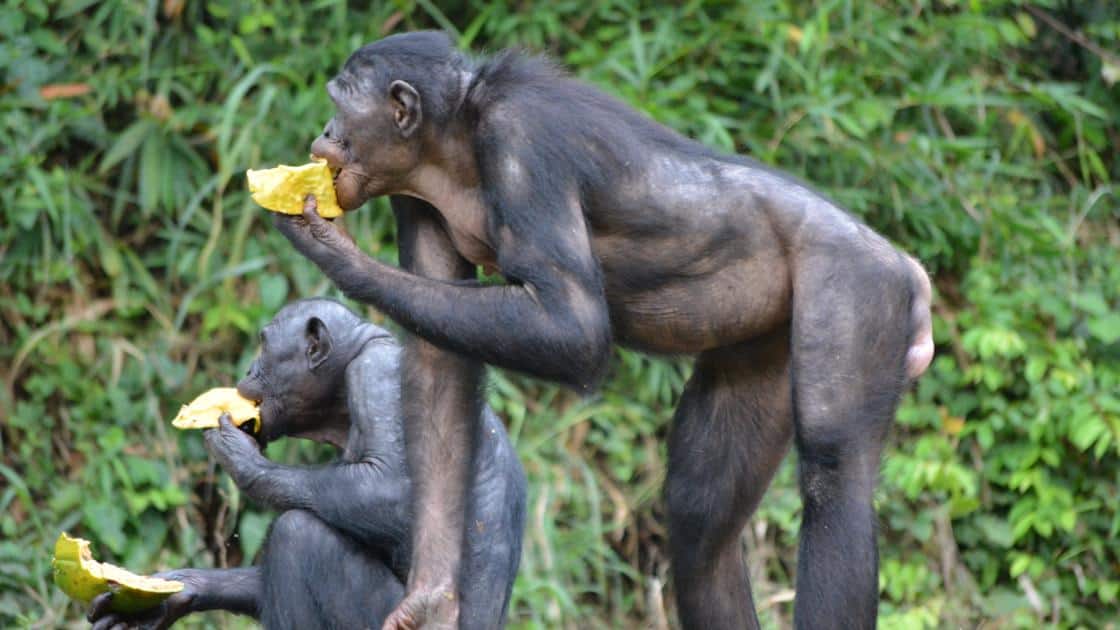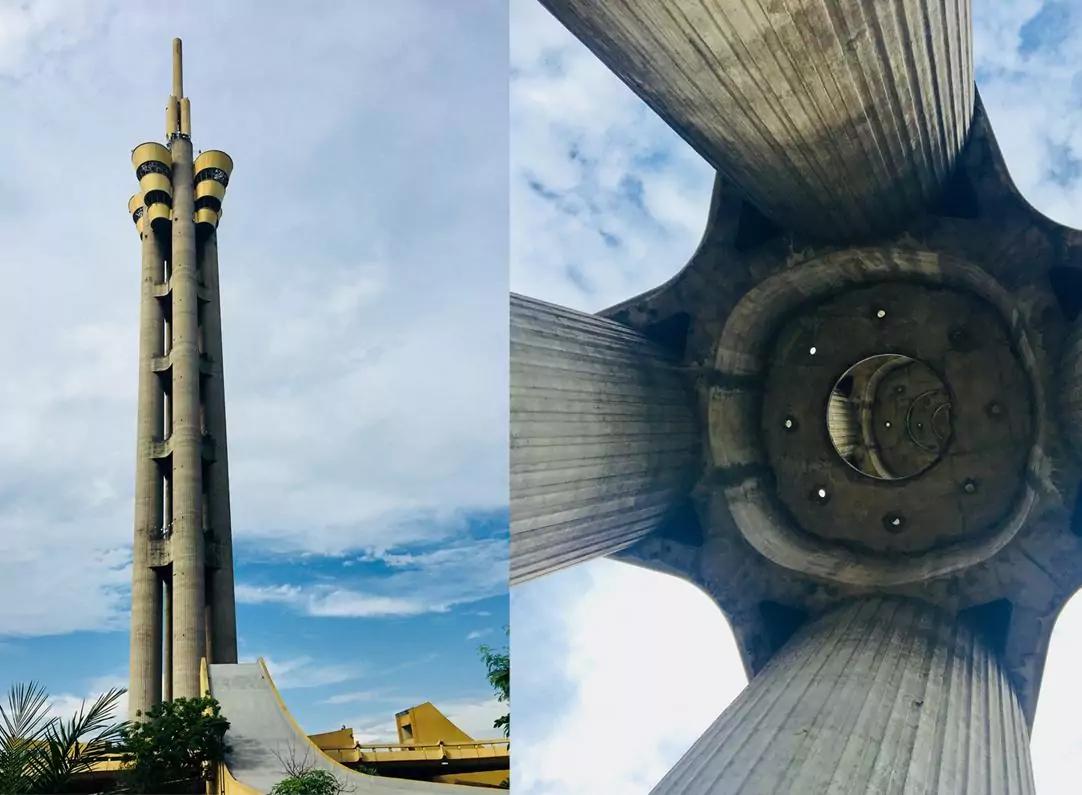
Often associated with extreme poverty and tribal endless wars, it’s easy to understand why the Democratic Republic of Congo is still in its infancy when it comes to tourism, however, it also means that its capital city, Kinshasa, is spared from all nuisances of mass-tourism like overcrowding and a lack of authenticity. A mixture of chaotic street scenery, unrestrained wildlife and a bit of French ambience await for the travelers who opt to literally leave their comfort zone and visit one of most fascinating cities in Sub-Saharan Africa.
Sharing its name with two of the countries where it flows through, the Congo River is far more than simply a body of water, it’s the deepest river in the world, supporting the livelihood of millions while defining international borders and consolidating a national identity.
Kinshasa might not be a coastal city, yet the sheer size of the Congo River makes it reminiscent of the sea as its width around the city can get up to staggering 5 km.
One obvious way in which you can enjoy and appreciate the river’s immensity is by strolling along its banks, nevertheless, it’s important to be aware that some of it is currently not accessible due to all sorts of reasons.
If you seek a more urban related experience, Gombe has plently of walkable esplanades and pleasant grassy riverfront, while the only decent dining option along the river is found in a docking ship called Majestic River, a floating restaurant offering international and local food on the backdrop of the Congo River.
Ultimately, the most memorable option to experience this monstrous stream of water is by cruise, ranging from one day trip to more than 20 days inclusive journey, bookable at many local travel agencies, both online and downtown-based.
Suffice to say that the Congo River serves as the international border between the Democratic Republic of Congo and the Republic of Congo, whose capital, Brazzaville, is both easily visible from Kinshasa’s riverfront and accessible by a short ferry service, crossing the river few times a day.

An aerial photo of Congo River around Kinshasa, revealing its enormity
photography by: MONUSCO/Abel Kavanagh
Served as the third president of post-independent DRC until his assassination in 2001 by one of his own bodyguards, Laurent-Désiré Kabila is both revered and scorned for his role of shaping modern Congo. While many people see him as the person who liberated the nation from the notorious dictator, Mobutu Sese Seko, others see him as war mongering figure and autocratic leader by his own right. Consequently, it’s still over debate whether Kabila was a virtuous or atrocious, yet it’s undisputed that so far, he was the country’s most influential political ruler, whose policies affect the nation to this day.
After his death, Kabila was succeeded by his son, Joseph, who commissioned the construction of a mausoleum to commemorate his father’s legacy whilst also provide him with an internal resting place. The monumental complex honoring the late president was built right in front of the Presidential Palace in Gombe, on the banks of the Congo River.
Interestingly, as part of the plan, a bronze sculpture depicting Kabila was erected by a group of North-Korean propaganda artists, assembling Kabila’s sculptured head into a replica of Kim-Jong-Il body, slightly reminiscent of the original art-piece in Pyongyang.
Facing the statue northwards is Kabila’s body, residing in a grave under a flamboyant pentagon-shaped roof, topped by a giant 3d star. Each of the tent’s five sides are supported by sculptured handcuffed hands, somewhat reflecting his image as a liberator.

The concrete tent under which Kabila is buried
photography by: Antoine Moens de Hase
Like most African cities, Kinshasa is a hectic metropolis, leaving most visitors overwhelmed after a couple of days, hence, a short break from the hustle and bustle is always the best remedy.
Nestled roughly 30 Km or one hour drive from central Kinshasa, Mount Mangengenge is the perfect place for half a day getaway from the city’s chaotic sceneries, as the green and lush environment provides the fresh air needed to contrast Kinshasa’s frenzy ambience.
The 718 high mountain is considered sacred by the local parish, thereby the moment you start ascending towards the summit, you’ll start noticing crucifixes scattered along the main path, most of which were placed as part of a religious campaign by the Bishop of Kinshasa, culminating in a massive cross at the top of Mt. Mangengenge. Subsequently, the mountain became a pilgrimage site in recent years, as devoted Christians from all over the region swarm into the crest in hope of achieving a divine inspiration.
Ascending Mt. Mangengenge alongside pilgrims is not only intriguing, but also an incredible opportunity to converse with locals while enjoying spectacular vistas of Malebo pool and its surrounding towns.

One of the crosses scattered around the mountain
photography by: Steeve P
What the Champs-Élysées is for Paris, Boulevard Du 30 Juin is for Kinshasa, as it’s not only a major artery connecting several districts but also functions as the city’s most prominent street, defining its entire character, much beyond the physical scope of the avenue itself.
The 5 km thoroughfare starts at the historic heart of Kintambo, continues eastwards while crossing the entirety of Gombe, culminating at the monumental square of June the 30th in front of Kinshasa’s central station, making it one of the longest avenues in Africa.
Originally called Boulevard Albert I after the Belgian King, it was renamed 30th of June, the date in which the DRC got its independence from Belgium, echoing the street’s significance not only for Kinshasa, but for the whole country.
Just until a decade ago, the avenue was a dusty unpaved road, quite surreal, given the fact that some of the country’s most important and impressive buildings were facing a bare sandy road. The current face-lifted street has 8 traffic lanes and sidewalks, leaving enough room for pedestrians to awe at perhaps the city’s most iconic edifice, Building ex-Sozacom, standing tall in a city still dominated by a low-rise housing.
Besides hosting a medley of architecturally intriguing buildings, Boulevard Du 30 juin is home to plenty of western-style cafés and restaurants, palatable for both tourists and locals.

Boulevard Du 30 Juin
photography by: MONUSCO/John Bompengo
Regardless of their geographic context, markets tend to be a non-sterile environment, thereby perceived as authentic place, and while it’s not always the case if you take into account the effects of mass tourism, we still regard them as a must-see attraction. This couldn’t be truer when it comes to Kinshasa, as the city has one of the most interesting markets to explore continent-wide.
Facing the botanical gardens, the central market, or Marche Central as it’s locally known, is an endless cluster of stalls, some of which are completely makeshift, leaving even the most experienced travelers completely speechless.
The current market, with its concrete umbrellas, was built in 1970’s by the order of former dictator Mobutu in an attempt to modernize the capital city. Five decades later, the same structure still dominates the market, yet the vendors along the hectic activity spilled over into the surrounding streets, creating a de-facto a market district.
This shopping monstrous complex virtually encompasses any merchandise imaginable, ranging from the more standard fruits and vegetables, to electronics, garments and all sorts of exotic animals from the nearby rainforest, most notably edible insects and caterpillars, only for the braves among you. If you wish to taste something more palatable, yet still typical Congolese, you definitely have to try Chikwangue, a savory bread made of cassava flour, wrapped and cooked in banana leaves.
While the central market is absolutely recommended to visit, it’s wise to be vigilant for any pickpocketing attempts, as foreign visitors often considered an easy prey.
The closest relatives of humans in the animal kingdom, Bonobos are one of only two Chimpanzee species worldwide, endemic of the Congolese rainforest. In recent decades, Bonobos became one of the most endangered species globally, facing extinction as their numbers in the wild dwindled to merely 10,000-20,000 individuals, mainly due to illegal poaching for bush-meat and slaughter of Bonobo mothers for the sake of selling their infants as pets in the black market.
In an attempt to combat the illicit activities and protect the fragile cubs, the world’s only bonobos orphanage and sanctuary called “Lola ya Bonobo” (a paradise for Bonobos in the local language) was opened outside of Kinshasa, nursing and protecting rescued Bonobo babies who were illegally purchased.
When arrived, each bonobo orphan is being taken care of by a single human foster mother, substituting the original one in order to mitigate the psychological effects caused by the traumatic experience of losing a mother, followed by the ensuing maltreatment as a pet.
The sanctuary is opened to visitors each day except for Mondays, offering exceptional interactions with those adorable pygmy apes while also providing a great opportunity to study about their life and conversation efforts.
Guests are obligated to make a minimum donation of 10 USD as an admission fee, then assigned an English or French speaking guide throughout the entire visit.
The easiest way of getting there from central Kinshasa is by booking a personal driver at your hotel or local travel agency, including a round trip (roughly one hour at each direction) and 2-3 hours waiting, rates range between 50-100 USD, depending on your bargaining skills.
Bonobo enthusiasts who wish to spend more time at the sanctuary can stay at the in-house accommodation, an exclusive adventure by its own right, as overnight guests lodge in the holiday villa of former dictator, Mobutu Sese Seko.

Lunch-time at Lola Ya Bonobo
photography by: Pxfuel
Skyscrapers and tall monuments in general are still a rare sight in the Democratic Republic of Congo, as in most of Sub-Saharan Africa, consequently each extant high-rise strikingly stands out as a landmark, often providing an orientation to city dwellers and visitors alike.
During one of his speeches, former president Mobutu introduced a policy known as the recourse to authenticity, aiming to consolidate a strong national identity by promoting local cultural aspects.
The implementation, which mostly focused at replacing street names of colonial rulers with local political figures, culminated in 1970, when the president solemnly launched the construction of a 210 meter monumental spire known as Tour de l’Échangeur (The Interchange Tower), located on a traffic island at the middle of Limete interchange, serving as the gateway to Kinshasa’s downtown.
The tower, consisting of four concrete cylindrical columns grasping a 3-levels observation deck, was never actually completed, standing as a white elephant for decades. In 2011, the site was refurbished and modernized while the ground level was transformed into a museum showcasing the Congolese nation, however, as of 2020, the elevators are still out of order, leaving visitors no chance of reaching the observatory with its panoramic views of Kinshasa.
Despite the aforementioned drawback, considering that the structure can be easily appreciated from outside and its proximity to other points of interests such as Kinshasa international fairground and Lumumba Statue, Tour de l’Échangeur is definitely worth a visit.

Tour de l'Échangeur and its colossal concrete columns
photography by: Steeve P